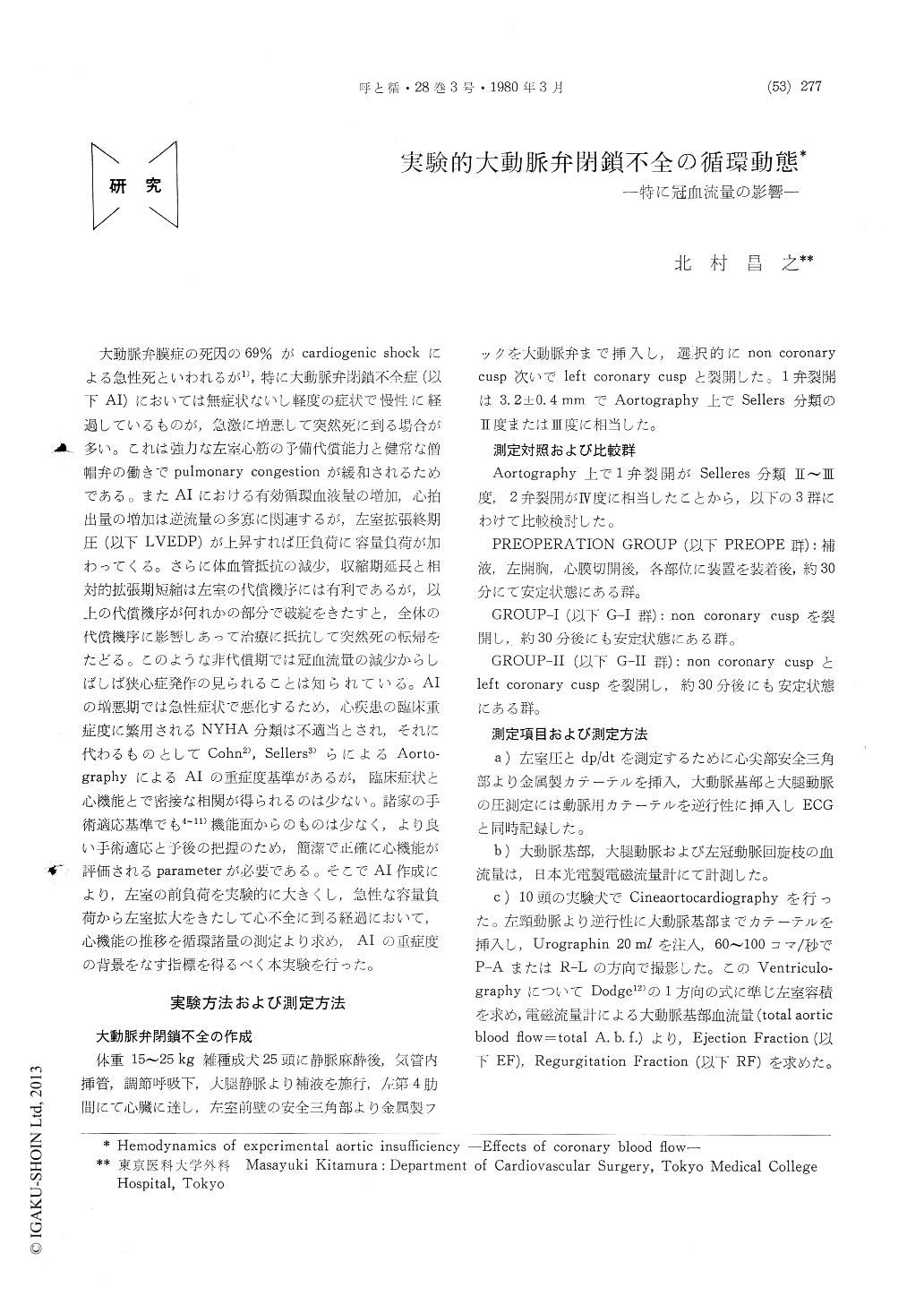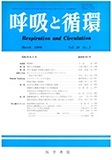Japanese
English
- 有料閲覧
- Abstract 文献概要
- 1ページ目 Look Inside
大動脈弁膜症の死因の69%がcardiogenic shockによる急性死といわれるが1),特に大動脈弁閉鎖不全症(以下AI)においては無症状ないし軽度の症状で慢性に経過しているものが,急激に増悪して突然死に到る場合が多い。これは強力な左室心筋の予備代償能力と健常な僧帽弁の働きでpulmonary congestionが緩和されるためである。またAIにおける有効循環血液量の増加,心拍出量の増加は逆流量の多寡に関連するが,左室拡張終期圧(以下LVEDP)が上昇すれば圧負荷に容量負荷が加わってくる。さらに体血管抵抗の減少,収縮期延長と相対的拡張期短縮は左室の代償機序には有利であるが,以上の代償機序が何れかの部分で破綻をきたすと,全体の代償機序に影響しあって治療に抵抗して突然死の転帰をたどる。このような非代償期では冠血流量の減少からしばしば狭心症発作の見られることは知られている。
In aortic insufficiency, an attack of cardiac failure is often fatal. This shows the loss in cardiac compensatory capacity. This course to cardiac failure was experimentally provided, and the parameters of the left cardiac function measured in an attempt to find the points con-tributory to judgement of clinical severity from such pathologic back-ground factors. It was shown that, out of the preoperation group, Group-I (with I valve open), and Group-II (with II valve open), the compensatory mechanism was badly broken down, and relative alterations of coronary blood flow were involved in it.

Copyright © 1980, Igaku-Shoin Ltd. All rights reserved.


